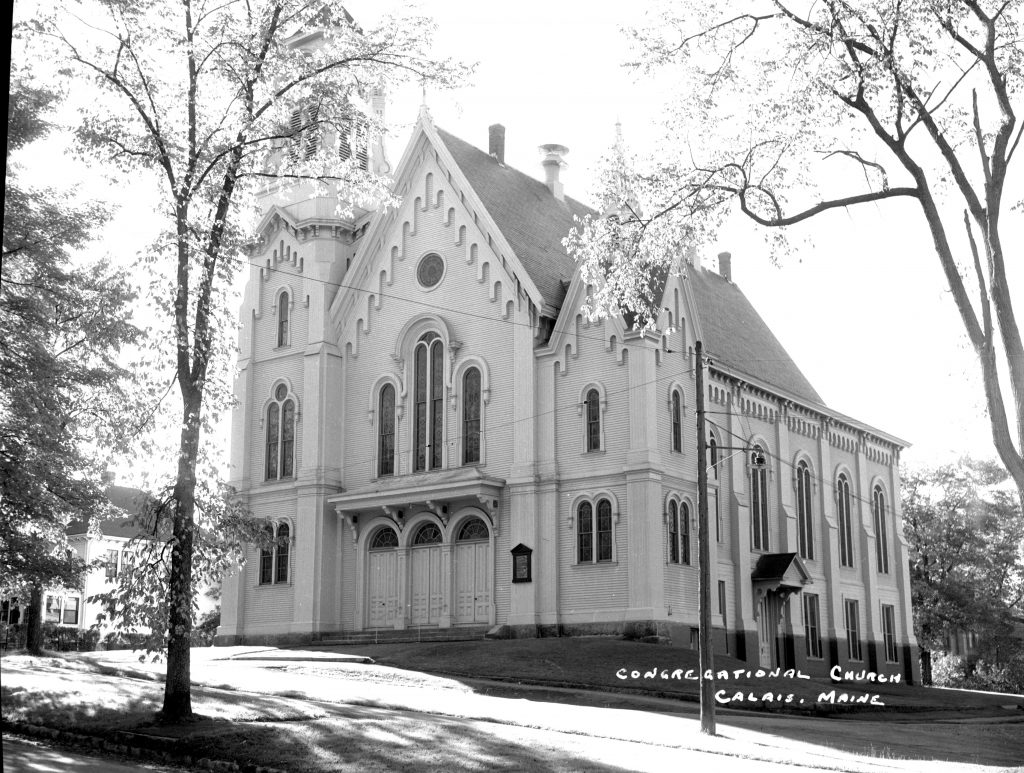
Today [31 May 2020] the last service of the First Congregational Church of Calais was held at the Congregational Church on Calais Avenue. While the number of participants in today’s service was nearly equivalent to that of the first Congregational service in 1825, the mood today was one of sadness and resignation after the church lost its long struggle to survive the financial challenges facing so many congregations today. Its closing is especially significant because for 200 years the Congregational Church of Calais has been one of the most important and influential institutions in the city.
The religious life of Calais began in 1806 when a few of the one hundred and fifty residents of the town employed a Congregational minister to preach in what was then a small frontier town. The minister, whose name is lost in the mists of time, was the first pastor in the city but preached to the faithful for only a few months. As noted in the first history of the area written by the Rev. Knowlton in 1875, the pastor would probably not have found Calais fertile ground for religion even though St. Stephen in 1806 already had the respected Reverend Duncan McColl ministering to the spiritual needs of their community. The Calais settlers, pioneers really, were a much tougher nut to crack for a pastor—a roughhewn and hard-nosed lot struggling with day to day survival and being, for the most part, uneasy and suspicious of government or formal societal organizations. However, the pastor’s effort was not in vain. As stated by Reverend Knowlton:
After this date, at various times came Rev. Mr. Adams, Rev. Elijah Kellog, and probably others, serving as missionaries and urging the people to greater zeal and a more united and definite effort in the direction of morality and Christianity. The good seed germinated. The better class of citizens became disgusted with the churchless heathenism of the place, and resolved if possible to inaugurate a more respectable and religious state of society.
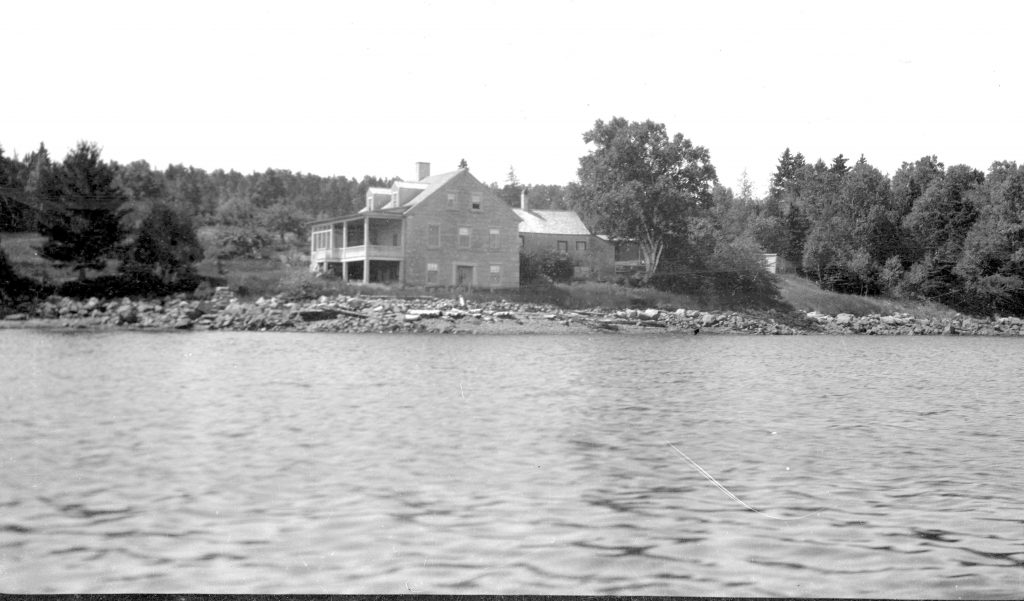
By 1825 the population of Calais had increased, and the area was beginning to see some measure of economic prosperity. Men such as Theodore Jellison had come to town with ambition and the intention of staking his fortune on the area’s future. It was in 1825 that he built the remarkable “Stone House” on the River Road which stands today as solid as the day it was built. He brought something else to Calais which had a profound effect on religion in this area—his wife Mary. On August 17, 1825 Mary Jellison and six others met at the Central School House, located about where the bowling club is today, and organized the First Congregational Church of Calais. Again, from Knowlton:
After long deliberation, much talk and many prayers, the auspicious moment came, and a decisive movement was made in the right direction. In the old Central School House, Aug. 17, 1825, a day never to be forgotten, “the first Congregational Church in Calais,” was duly organized. Revs. Elijah Kellogg of Portland, Jonathan Bigelow of Lubec, and Alexander McLane of St. Andrews, were present and conducted the service. Eight persons united in the church relation: three men and five women. Their names were Amaziah Nash, Daniel McDougal, E. M. P. Wells, Mary M. Jellison, Jane Darling, Lydia Christopher, Lucy Gates, Mary Ann Boies. The five ladies were married, and their less devout or more scrupulous husbands were at least not opposed to the good work going on. The five families were thus enlisted on the right side.
Soon many local residents of other Protestant denominations became interested in associating with the Congregationalists and planning began to build a meeting house in town. With the financial support of the community, the church pictured below was built at the crest of what was named Church Avenue, now known only as the Avenue. The entrance faced Main Street and was accessed by the same walkway which today takes us all the way to Washington Street although in 1825 the walkway ended at the front doors of the church. The building was dedicated on September 8, 1826 and, as was the custom in those days, pews in the church were sold at an auction which grossed $4,761, an enormous amount in 1826. Most of the well-heeled residents of Calais were purchasers even though many were not Congregationalists. Within a couple of decades, the Anglicans, Baptists, Methodists and Unitarians left to form their own societies.
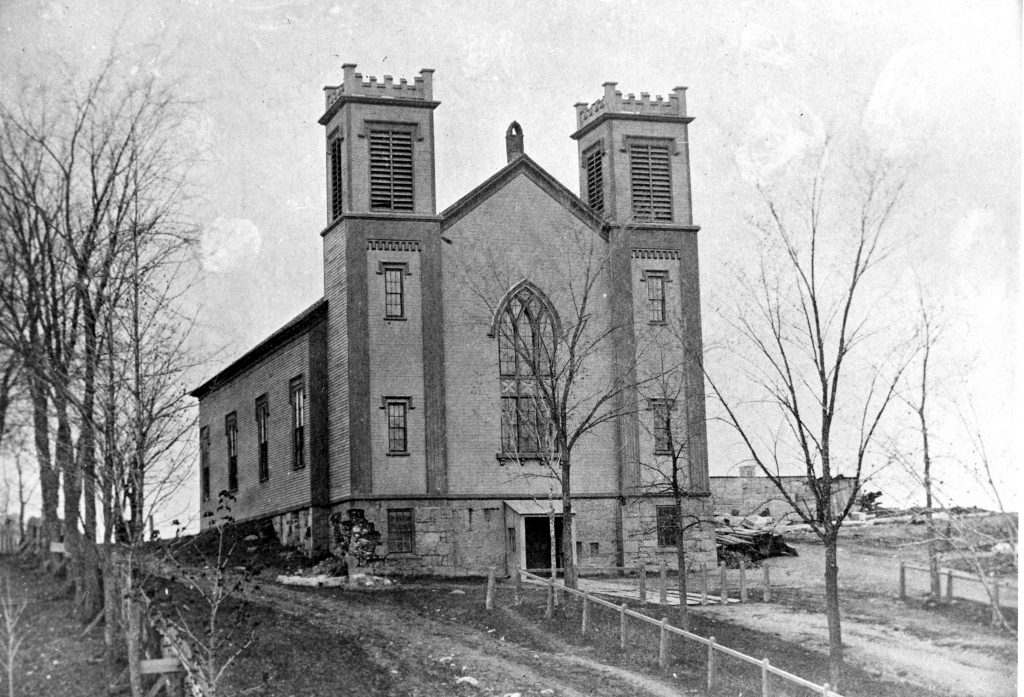
Nonetheless, the Congregational Church remained the most popular and influential Protestant church in Calais for over 100 years. The lumber barons, especially the Eatons and Murchies, supported the church as did many of Calais’ movers and shakers such as Deacon Kelley, the Pike family and Dr. Swan. In those early days church was not simply a Sunday morning affair. In 1855, for instance, the church history tells us:
The church services in those days consisted of preaching forenoon and afternoon with Sunday School in the afternoon; a missionary concert on the first Sunday of each month, a Sunday School concert on the second Sunday, a seaman’s concert on the third, and a prayer meeting on the fourth. The weekly meetings were on Wednesday and Saturday evenings. Mr. Rockwood said of that period: “It all kept our pastor, Mr. Keeler pretty busy.”
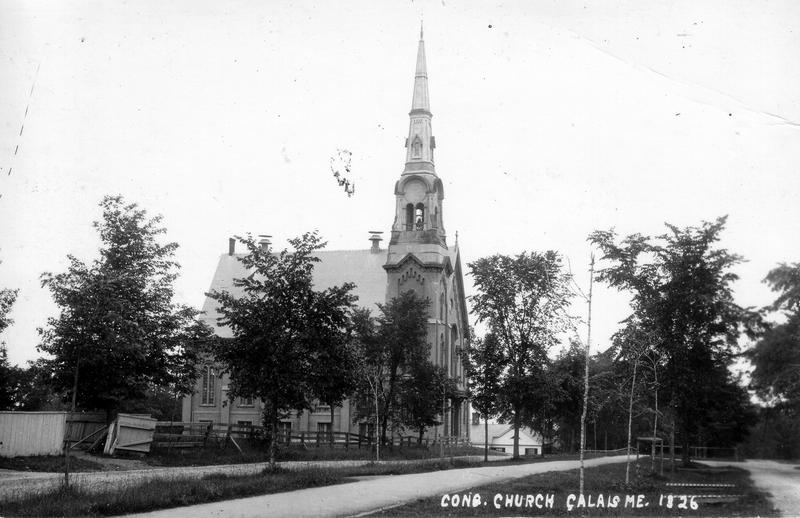
By 1871 the congregation had outgrown the building and plans were made to build a new church, pictured above soon after being built, (the date 1826 refers to the date the church was formed) which was dedicated August 31, 1873. From the church history:
Plans for building the present church were begun in March 1871. Mr. Samuel Pike, Mr. Joseph A. Lee, Mr. A. II. Sawyer, Dr. Charles E. Swan, and Mr. E. C. Gates were the building committee. In May Mr. Pike and Mr. Lee were sent to look over churches in various places with a view to finding something suited to the needs of this parish. They reported that they had examined a number in Boston, Portland, and other places, and recommended combining the interior of one seen in Boston with the exterior effect of one in Saco, Maine. The plans of Mr. John Stevens of Boston were accepted, and the church was built at a cost of about thirty-nine thousand dollars. The women paid one-half the cost of the organ, $1,800, besides furnishing the carpet, cushions and pulpit furniture.
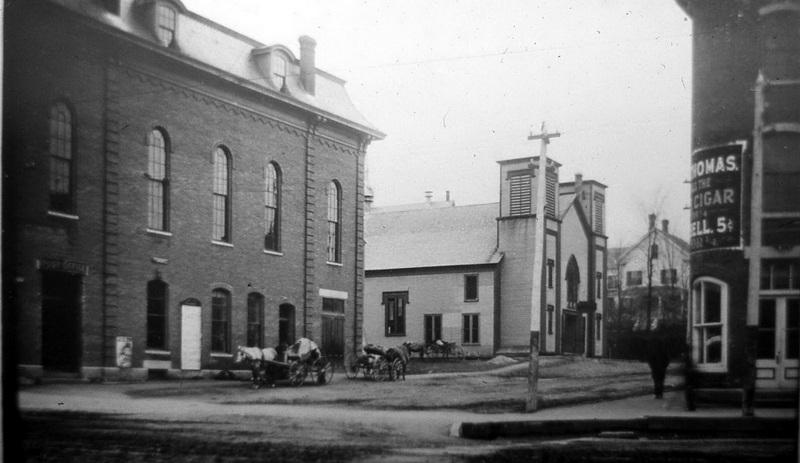
The old church was moved to Church Street directly across from what is now the City Building and became Pike’s Opera House. It was also City Hall for a period of time, a dance hall, roller rink and Grange Hall. The new church was built just across the Avenue from the old church. The Congregationalists gave the city the lot at the top of Church Avenue in exchange for the City’s agreement to build a street connecting the Avenue with Church Street which we know as Park Street. It was so named because the city intended at the time to make the Avenue a city park.


The new church was by far the grandest and most spacious in the city. Large weddings, school graduations, and other civic events were held in the church—which also featured a magnificent Stevens organ. However. as early as the late 19th century the church struggled to maintain its membership. The population of the city had decreased, and the vast fortunes of lumber barons who supported civic and religious institutions declined. Other denominations built fine churches and expanded their congregations. The 1872 building was an enormous structure and became prohibitively expensive to heat and maintain. In the early 1970s the building was closed for a couple of years and the congregation attended services with the Methodists.

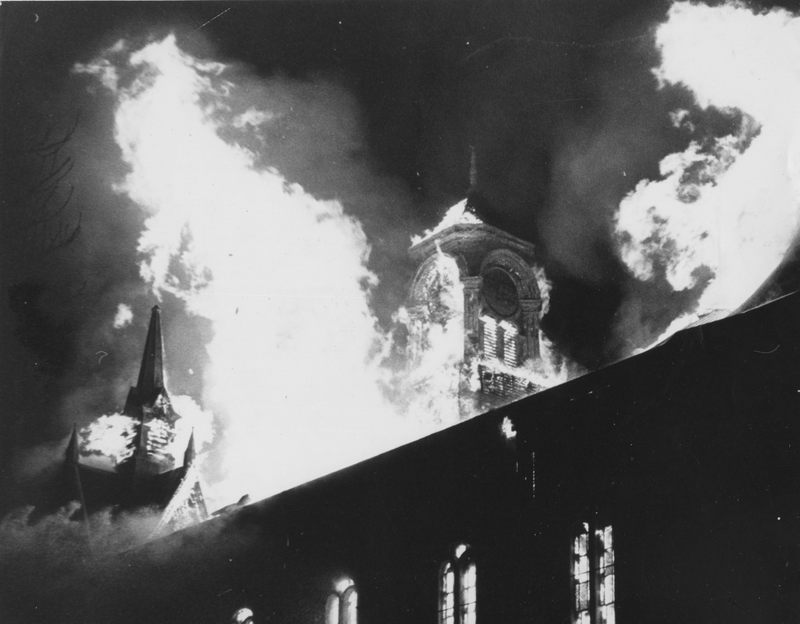
In February of 1992 the church was completely destroyed by fire in one of the most spectacular blazes in the city’s history. It was, of course, a tragic loss, but there was a silver lining as insurance proceeds were sufficient to build the present church which is far more practical and a fine and pleasing structure. Sadly, the decline in church membership continued as has the population in the community. Like so many other churches in this area and around the country the members were compelled for financial reasons to close, in the case of the Congregational Church of Calais just short of what would have been its 200-year anniversary. The church has a rich and admirable history of service to the community and its contribution to the community will continue. The church has conveyed the building and property to the WCARC (Washington County Alliance for Recovery Coaching) and Sunrise Opportunities which operate, among other things, the Beckett Center, an organization which all will agree does good work for the community. The church members hope this modern building will put the Beckett Center in a position to expand its programs for those in the community in need. A substantial amount will also be provided to the Calais schools for a scholarship.
